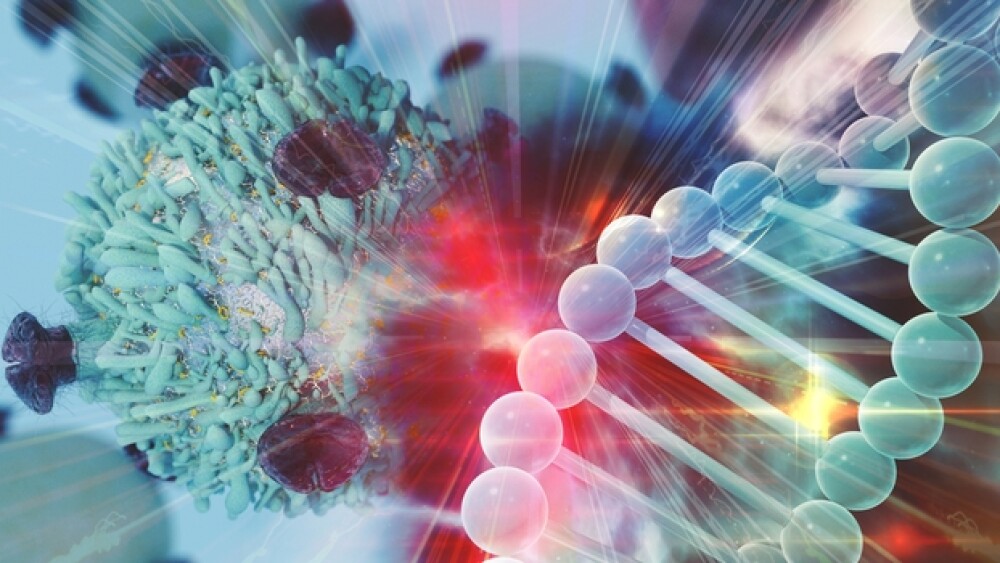With regulatory approvals beginning to break through, attendees at ISCT’s annual meeting set out along the translational pathway. Organizers shared their findings with BioSpace.
Last week’s International Society for Cell & Gene Therapy (ISCT) annual meeting was about much more than where the cell and gene therapy space has been. With regulatory approvals beginning to break through the R&D, attendees set out along the translational pathway. ISCT President Bruce Levine and 2022 Annual Meeting co-chair Sven Kili revealed just some of what they found along the way.
“Normally we have cell type and disease type, but this time we went along the translational pathway from innovation to first in human all the way out to commercialization of patient access,” Levine told BioSpace.
There were also more than 30 roundtables where industry, investors, regulators, physicians and patient groups debated and problem-solved key pain points in translational cell and gene therapy such as the question of potency assays, the impact of supply chain shortages due to COVID-19 and optimizing CAR T-cell therapy.
Complications From COVID-19
As the world begins to slowly emerge from the pandemic phase of COVID-19, nearly every industry, including biotech, is facing aftershocks.
“There are shortages of supplies, and reagents,” Levine said, sharing that he had been contacted about a filter needed to manufacture a viral vector. “It was on back-order for 38 weeks.”
So, how does the industry propose to solve this problem?
“There are some looking for alternatives [such as] crowdsourcing,” Levine offered. He acknowledged, though, that “in some cases, if something can’t be replaced, that has an impact on generating those therapies for patients.”
Another challenge, of course, is that the SARS-CoV-2 virus is still affecting people—employees and trial participants alike. “If a patient or candidate to be a subject in a clinical trial were to get sick or return positive, then that would affect their treatment or their enrollment in the clinical trial,” he pointed out. The solution to this problem would appear to lay in a whole other part of the biopharma industry.
At the process development and CMC stage, Kili, who is also CEO at Antion Biosciences, highlighted a preprint paper authored by Hannah W Song et al. at the National Institutes of Health. The paper compared the latest technology used to manufacture CAR- and TCR-engineered T cells in the clinic.
“They compared four of these and actually looked at the yield in terms of volume, in terms of cell density and in terms of memory phenotype cells and active activated cells. That was very enlightening to see the results,” Kili said.
Regulators Tuned in to Cell and Gene Therapy
One primary topic of discussion on the manufacturing and development side was how to bridge clinical data and remove variability. The key question was: Potency Assays: Why, when and what if? Levine discussed the inherent complexities.
“We have a cell product and maybe that cell product is not in the final form that it will be functionally when you test it, but it is delivered inside of the body. So how do you think about potency and how do you think about potency as a surrogate marker and how do you gather the data” to the point where the U.S. Food and Drug Administration is satisfied that it is meaningful?
Appropriately, Dr. Peter Marks, director of the FDA’s Center for Biologics Evaluation and Research, was a key part of the panel.
“In Dr. Marks’ words, ‘perfect is the enemy of good,’ Levine recounted. “You can think you’re measuring 50 different parameters and you have something that’s very precise, but if it’s not accurate, then that is not an appropriate potency assay.” He added that a number of companies have been tripped up in this area in their FDA submissions.
Reflecting the forward momentum of the space, Levine said Wilson Bryan, director of CBER’s Office of Tissues and Advanced Therapies, attended a “significant number of sessions.”
You Made It: Now What?
On May 6, ISCT’s attention turned to answering the following question: You Made It, Now What?
The FDA lists 23 approved cell and gene therapies. Among them are Bristol Myers Squibb’s Abecma (idecabtagene vicleucel), which in March 2021 became the first cell-based gene therapy for adults with multiple myeloma; Novartis’s Kymriah, which in 2017 won the honor of the first FDA-approved CAR-T cell therapy; and Spark Therapeutics’ Luxturna, which became the first approved gene therapy for eye disease, also in 2017.
A global society covering North America, Europe, Australia, New Zealand, Asia and South and Central America, ISCT is committed to both sharing learnings across these regions and ensuring that every one of them has equitable access to these potentially life-changing medicines.
“We just helped stand up a South and Central America legal and regulatory affairs committee,” Levine shared. “You can imagine in some countries, there just isn’t that regulatory framework to be able to review and oversee these types of therapy. So we have a reach into all of the regions and can assist in standing up that framework.”
Kili chaired a roundtable entitled: Are Cell & Gene Therapies a First World Only Luxury? Panelists included a researcher and clinician from South Africa, a clinician from Chile, a researcher from India and a representative from Novartis.
“It was supposed to run for an hour and a half in total, and after two hours I eventually called it,” he said. “I had only asked one of my prepared questions. The rest of the questions were from people in the audience engaging and challenging.”
One central question pertained to ensuring “the stickiness of cell and gene therapy” in a particular country. Kili shared that “In South Africa, they were talking about what can they do to generate sufficient health economic data and pharmacodynamic data to convince the government that these are priorities.”
A key challenge, Kili said, pertains to the vector. “Everyone refers to the bottleneck with the manufacturing of the vector…but that’s something we will get sorted by. The other issues are actually around the quality and the quality release that’s required to ensure that the vectors are safe and appropriate and reasonable, and that seems to be quite a bottleneck also.”
The question of patents and access has been a hot-button issue around the mRNA technology that is the basis of the Pfizer-BioNTech and Moderna COVID-19 vaccines. A similar concept was raised by a Canadian attendee.
“They had looked at a mechanism whereby a company’s patent protection may be extended for the purposes of developing in a specific country, which was sort of opposite to what we’ve heard before,” Kili said. The group discussed whether “those countries would actually extend a patent based on a willingness of that company or that group to develop that therapy in that country.”
In another session hosted by Levine, panelists discussed the problem of the ROI (or lack thereof) in developing cell and gene therapies for rare genetic diseases. The idea of organizing an academic nonprofit consortium to support this research and development was proposed.
Likening ISCT to Rosetta Stone, Levine explained that the organization has three central pillars. “We have the scientific pillar, we have the regulatory and quality operations and we have the commercialization pillar,” he said. “Just as you need a degree to be able to decipher hieroglyphs, you need to be proficient not only in the science but also in the regulatory aspects, and to commercialize you have to understand the science and the regulatory environment.”
Thus, the overarching intention of the conference was “bringing in people, building up expertise and establishing a network where we can share expertise in our particular sectors.” It was an opportunity ISCT members savored after two long years of isolation.
Featured Jobs on BioSpace








